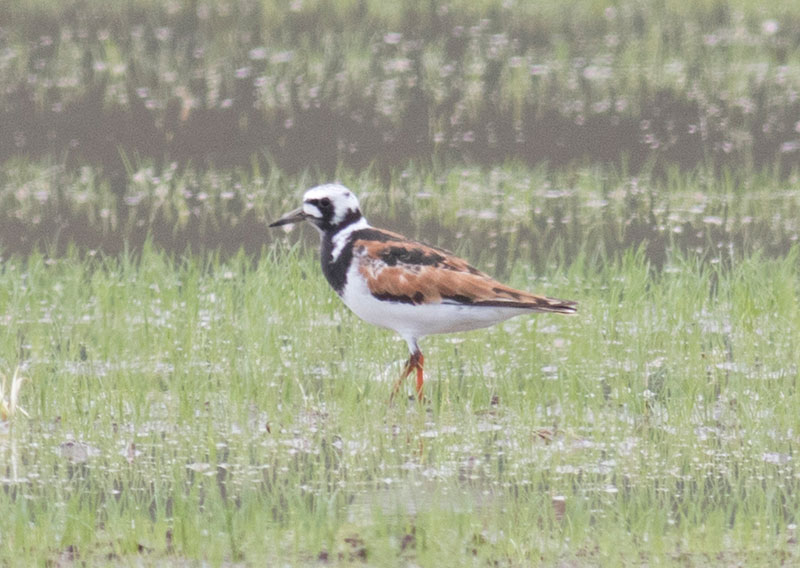Ruddy Turnstone in Avis
6/11/17
By David Brown
On May 29th my family and I spotted a ruddy turnstone while driving through the farmland south of Avis in Clinton County.
The ruddy turnstone is a medium-sized species of shorebird about 9 inches long with a 21 inch wingspan, making it slightly smaller than a killdeer. Ruddy describes the reddish coloration of the back and wings in breeding plumage. They are mostly white underneath with a black breast and striking white head with black patterning near the eye. Turnstone describes the behavior of using the bill to flip objects to look for food underneath, such as insects and crustaceans.

Ruddy Turnstone
Ruddy turnstones are long-distance migrants. They spend the winter along both coasts of North America and South America and nest in the tundra of northern Canada and Alaska. In spring ruddy turnstones can be found in large numbers along the Delaware Bay as they feed on the eggs of horseshoe crabs. They are also found in other regions of the world such as Asia, Europe, and Australia. The only other turnstone species in the world, the black turnstone, is found along the west coast of North America.
Ruddy turnstones are rare in central Pennsylvania with a few sightings per year at most. Migrating shorebirds often stop to feed at farm field puddles. One of the best times to look can be after rainstorms during spring and fall migration because the puddles are the largest and rain can force the birds to the ground. Our turnstone was feeding at a puddle on the field of a sod farm along with a killdeer. Later in the day other observers saw it with other uncommon shorebird species including 2 dunlins, a semi-palmated plover, and a semi-palmated sandpiper.
Spring migration is now coming to an end as we enter the breeding season. Watch for fledgling European starlings, common grackles, and American robins in your yard. Many birds continue singing throughout June then the woods get quieter as we get into July and August. By late-August fall migration begins to ramp up as all the birds head back south.
Summer is a great time to enjoy the outdoors. Take the time to learn a few new birds, butterflies, trees, flowers, or dragonflies. The more you learn the more you will appreciate nature and find ways to preserve it.